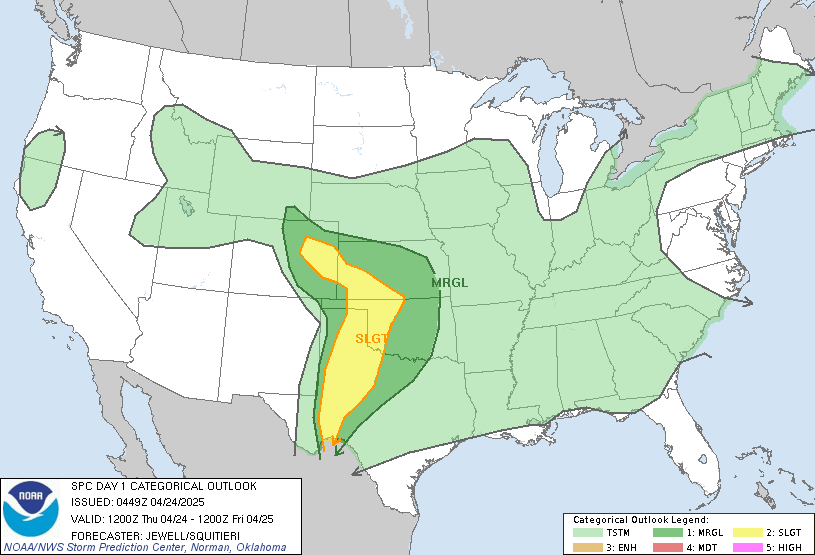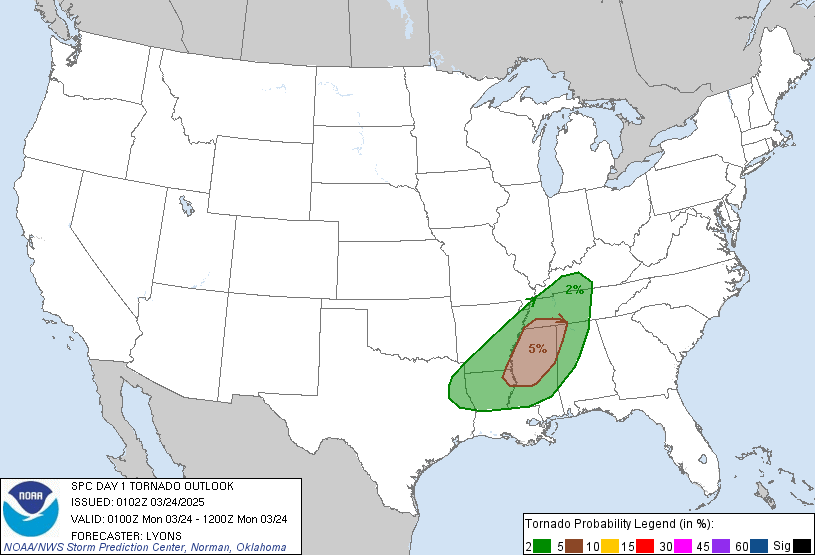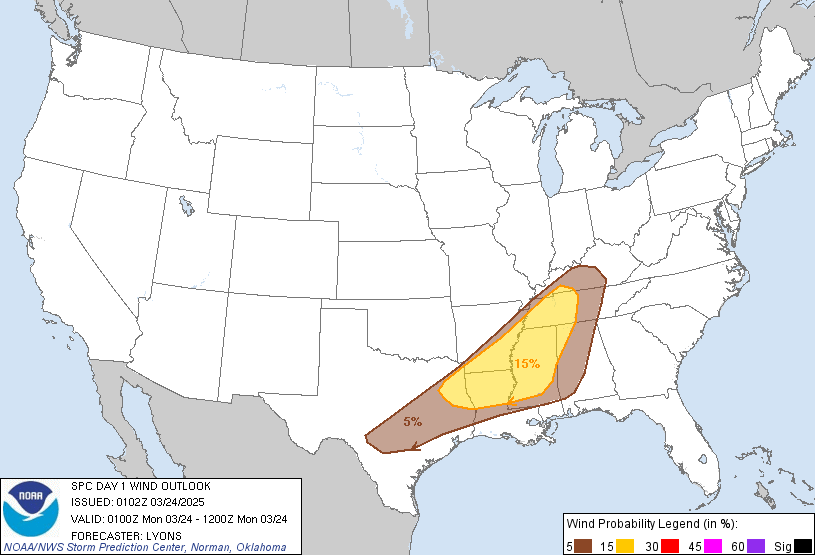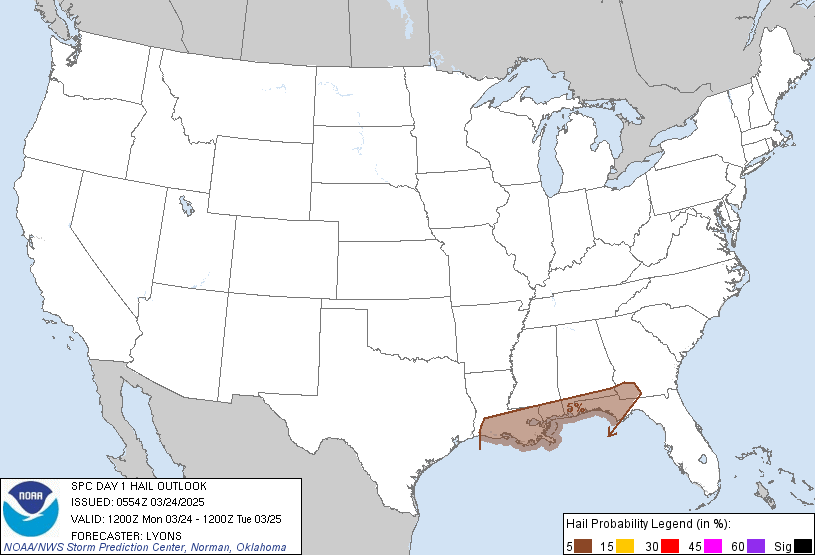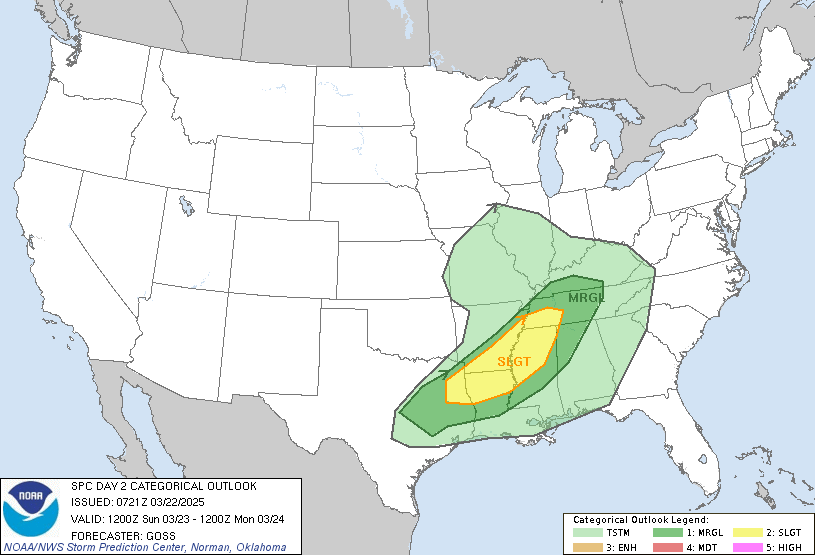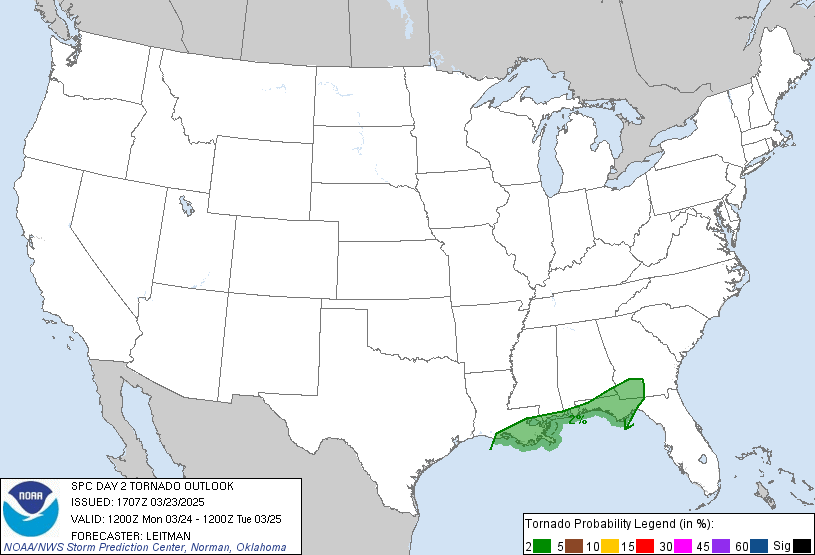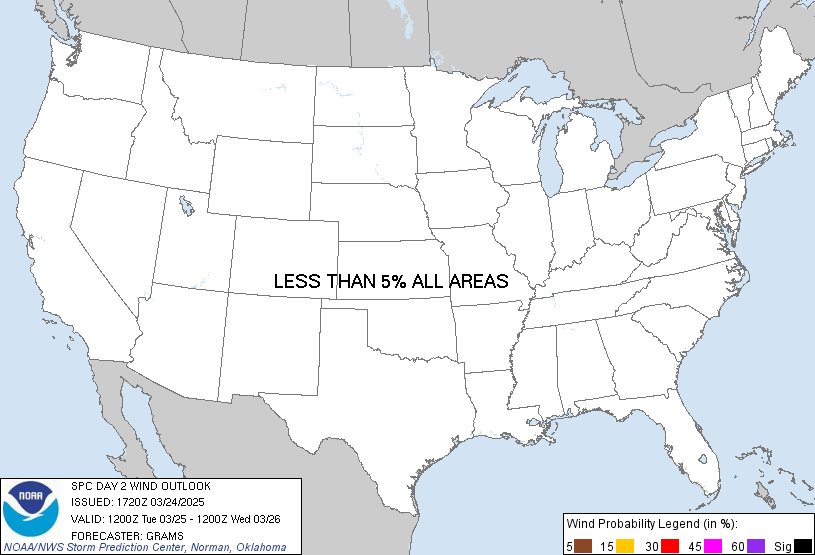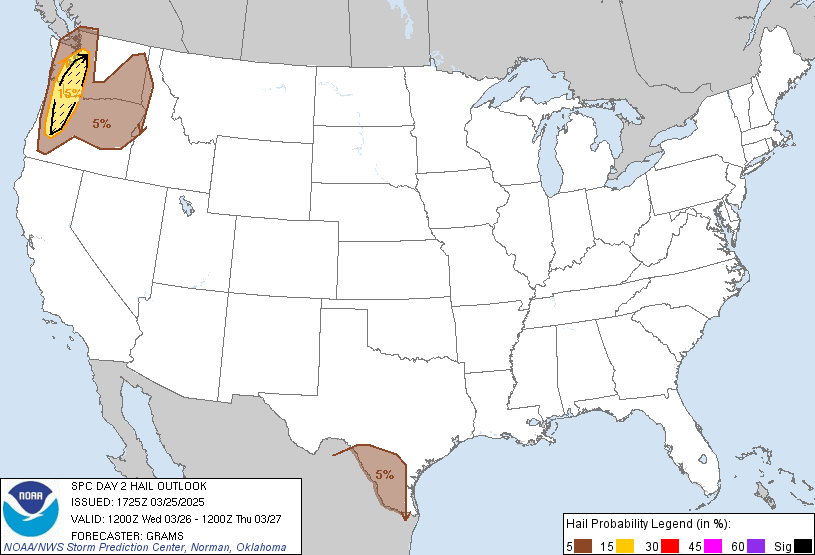Current Excessive Rainfall Discussion Issued by the Weather Prediction Center
Excessive Rainfall Discussion
NWS Weather Prediction Center College Park MD
858 PM EDT Sun Oct 12 2025
Day 1
Valid 01Z Mon Oct 13 2025 - 12Z Mon Oct 13 2025
...THERE IS A SLIGHT RISK OF EXCESSIVE RAINFALL FOR PORTIONS OF
SOUTHERN ARIZONA AND THE COASTAL PLAIN OF THE CAROLINAS...
0100Z Excessive Rainfall Discussion Update...
Maintained the Slight Risk across parts of the Coastal Plain in
northeast SC and far southern NC -- essentially the area that has
already received 3-5+ inches in spots with banding persisting into
the area (pivoting very little). Rainfall rates are not as much of
a concern (limited deep-layer instability); however, considering
the rain already fallen along with the persistent banding, have
kept the Slight going.
Across AZ -- the latest observational and mesoanalysis trends,
along with recent ensemble exceedance probabilities (HREF and
RRFS), was able to trim a bit of the Slight Risk from parts of
central and southwest AZ, along with southwest NM.
Hurley
0830Z Excessive Rainfall Discussion...
...Southwest...
Deep moisture, fortified with the remnants of Tropical Cyclone
Raymond, will remain in place over portions of southern Arizona and
New Mexico. This morning's mesoanalysis shows PWs of 1.25-1.6
inches (3-4 std dev above normal) covering much of region. This
moisture along with increasing large-scale ascent, provided by an
approaching upper trough, will support another day of widespread
showers and storms capable of producing moderate to heavy amounts.
Maintained a Slight Risk covering much of southern Arizona and a
small portion of southwestern New Mexico. Both the HREF and RRFS
neighborhood probabilities indicate locally heavy amounts
exceeding 2 inches are likely within this region, with some
potential for amounts over 3 inches, especially across parts of
southern Arizona.
...Eastern Southern Carolina and Southeastern North Carolina...
The initial low of what is expected to evolve into a two feature
system is forecast to linger along the coast in the vicinity of the
North and South Carolina border today. Deeper moisture will remain
as well, with many of the 00Z models, including the globals,
showing a notable signal for locally heavy amounts developing later
today. While instability will be limited, deep saturation through
the column, and tall, skinny CAPEs are expected to support very
efficient rains, promoting heavy amounts. Both the HREF and RRFS
showing high probabilities for additional amounts over 3 inches
today across parts of the region. These amounts may raise runoff
concerns, especially for those areas where significant rains have
already occurred. Therefore a Marginal Risk was introduced for
areas where the hi-res ensembles indicate the heaviest amounts are
most likely to fall.
...Northern Mid Atlantic to Southern New England Coasts...
North of its parent, a secondary, triple-point low is forecast to
develop near the northern Mid Atlantic coast. There remains some
model uncertainty regarding if and to what degree this low will
become the dominant surface feature. Despite the differences,
there is broad agreement that strong, low level easterly winds, in
combination with strong mid-to-upper level forcing, will support
widespread precipitation from the northern Mid Atlantic coastal
region to central New England, with heavy amounts expected along
the coast. These heavy rains may compound what are likely to be
poor ground conditions attributed to ongoing coastal flooding.
Pereira
Day 1 threat area: <a href="https://www.wpc.ncep.noaa.gov/qpf/94epoints.txt"<u>www.wpc.ncep.noaa.gov/qpf/94epoints.txt</u></a>
View the WPC's Day 1 Excessive Rainfall Outlook
Go to our Safety Center for information about Severe Weather Safety

